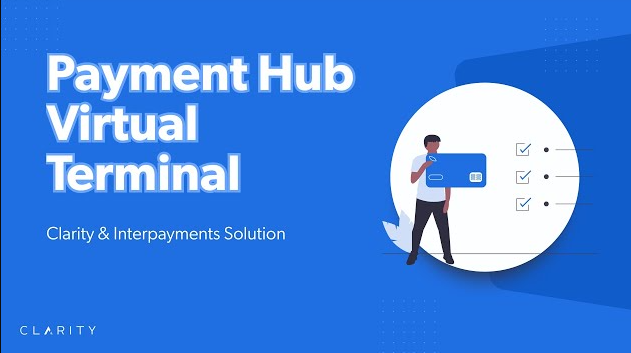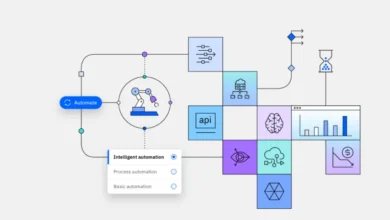Virtual Versatility: Mastering Payments with Virtual Terminals

In the digital age, the way we process payments has undergone a significant transformation. Virtual terminals have emerged as a versatile and efficient solution for businesses looking to streamline their payment processing operations. This blog post delves into the world of virtual terminals, highlighting their benefits, functionalities, and the key role they play in mastering payments in an online ecosystem.
Contents
- 1 The Rise of Virtual Terminals
- 2 Versatility in Payment Options
- 3 Secure Transaction Processing
- 4 Streamlining Operations with Integrated Features
- 5 Remote Accessibility and Efficiency
- 6 Reporting and Analytics Capabilities
- 7 Integration with Business Systems
- 8 Streamlining Restaurant Credit Card Processing with Virtual Terminals
The Rise of Virtual Terminals
Virtual terminals have become indispensable tools for businesses of all sizes, enabling them to accept payments securely and conveniently online. Unlike traditional point-of-sale systems, virtual terminals operate through a web browser, allowing merchants to key in payment details manually or process transactions remotely. This flexibility has made virtual terminals a preferred choice for e-commerce businesses, service providers, and organizations seeking a seamless payment processing experience.
Versatility in Payment Options
One of the key advantages of virtual terminals is their versatility in accepting various payment methods. From credit and debit cards to e-wallets and electronic checks, virtual terminals support a wide range of payment options, catering to diverse customer preferences. By offering multiple payment channels, businesses can enhance customer satisfaction, boost conversion rates, and expand their reach in a competitive market landscape while leveraging ISO agents for streamlined transactions.
Secure Transaction Processing
Security is paramount in the world of online payments, and virtual terminals ensure secure transaction processing through encryption and compliance with industry standards. By adhering to Payment Card Industry Data Security Standard (PCI DSS) requirements, virtual terminals safeguard sensitive payment information, reducing the risk of fraud and protecting both businesses and customers from potential security breaches. With secure transaction processing, businesses can instill trust and confidence in their online payment systems.
Streamlining Operations with Integrated Features
Virtual terminals not only offer versatility and security but also come equipped with features designed to streamline business operations. These include capabilities for recurring billing, invoicing, and customer data management. This integration of additional services allows businesses to automate and simplify processes, reducing manual effort and increasing efficiency. With the ability to manage subscriptions, generate digital invoices, and store customer information securely, virtual terminals serve as a comprehensive solution for managing online transactions, providing businesses with the tools they need for streamlined payment processing and effective customer relationship management.
Remote Accessibility and Efficiency
Virtual terminals offer unparalleled convenience by allowing businesses to process payments from any location with internet access. Whether it’s accepting payments from a home office, a trade show booth, or a mobile setup, virtual terminals provide remote accessibility and efficiency, enabling seamless transaction management on the go. This flexibility empowers businesses to adapt to evolving market demands and serve customers wherever they are located.
Reporting and Analytics Capabilities
Another advantage of virtual terminals is their robust reporting and analytics features, which provide valuable insights into payment trends, customer behavior, and transaction performance. By generating detailed reports on sales data, chargebacks, refunds, and more, businesses can make informed decisions, optimize their payment processes, and identify opportunities for growth and improvement. The data-driven approach offered by virtual terminals empowers businesses to refine their strategies and drive revenue.
Integration with Business Systems
Virtual terminals can seamlessly integrate with existing business systems, such as accounting software, customer relationship management (CRM) platforms, and inventory management tools. This integration streamlines payment reconciliation, automates financial workflows, and enhances overall operational efficiency. By syncing payment data across different systems, businesses can eliminate manual tasks, reduce errors, and improve productivity, ultimately leading to a more streamlined and cohesive business environment.
Streamlining Restaurant Credit Card Processing with Virtual Terminals
In the bustling environment of the restaurant industry, credit card processing plays a pivotal role in ensuring smooth, efficient transactions between the establishment and its customers. Virtual terminals have revolutionized restaurant credit card processing by providing a flexible, secure, and fast payment solution. With the capability to handle dine-in, take-out, and online orders, virtual terminals adapt to various service models, enhancing the customer experience. The added feature of tipping options and split bill functions further tailors the payment process to the nuances of restaurant transactions, making it an invaluable tool for businesses aiming to refine their operational workflow and boost customer satisfaction.
In conclusion, virtual terminals are instrumental in mastering payments in an online landscape, offering versatility, security, efficiency, and integration capabilities that empower businesses to optimize their payment processing operations. By leveraging virtual terminals, businesses can enhance customer experience, drive growth, and stay ahead in the ever-evolving realm of digital payments. Embrace the virtual versatility trend today and unlock the full potential of online payment management with virtual terminals.



